
by Phillip Kindschi | May 8, 2018 | Occupational Therapy, Speech Therapy
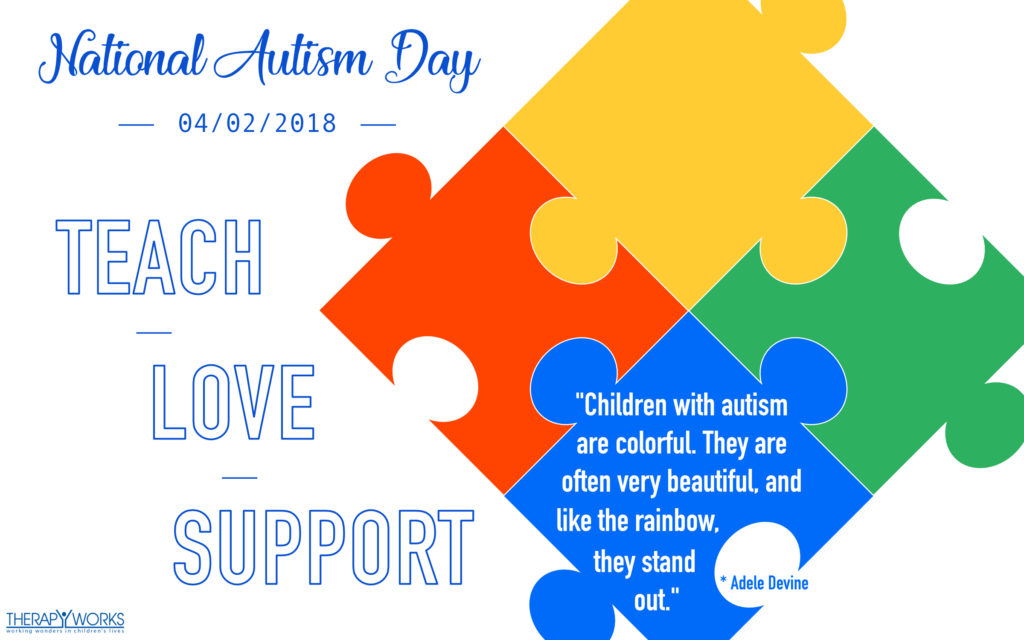


April has come and pass, but it brought warmer weather…and MAY! Finally!! For many reasons, April AND May are always very special to TherapyWorks. We celebrate these months in clinic for reasons that are dearest to our hearts.
Reason 1: April, honors and celebrates Autism Awareness throughout and on a specific day as well; April 2nd marked the 11th annual “World Autism Awareness Day“. Autism does not end in April and it certainly does not become less important after the 2nd day of the month. Join us in celebrating autism awareness month throughout the month of April by finding ways to support the community and foundation. Autism prevalence is now one in every 59 children in America. Show your support for people with autism by wearing the Autism Awareness Puzzle Ribbon or simply adding the ribbon to your FB profile photo, not just in April, but throughout the year! A simple gesture can go a long way sometimes. Learn more about the diagnosis and what you can do to help the cause by visiting “www.autism-society.org” and/or visiting their Facebook page: “facebook.com/AutismSociety“.
Reason 2: “Occupational Therapy Month” is apart of April as well! We sure do love our O.T’s. here at TherapyWorks. Without these wonderful therapists, we wonder where the treatment would come from. O.T.’s treat so many children and adults with challenges such as Autism, DHD, Brachial Plexus, Sensory Processing, Fine Motor Skills and Sensory Developmental Delays. We would be lost without them as they have helped so many of our kids overcome challenges an surpass expectations. Just like Speech and Physical therapy, Occupational Therapy is very important to our growth and development in this world. Occupational therapy has been around for 101 years, starting back in the WWI era as ‘reconstruction aides’ in 1917. Helping our soldiers is an amazing way for a segment of an industry to begin! To all the O.T.’s here at TherapyWorks and the other hundreds of thousands across the globe, keep working wonders and healing hearts! You make this world a better place! THANK YOU!  💙
💙 .
.
Reason 3: “Better Speech & Hearing Month” means we celebrate all the SLPs out there doing their part to help everyone enjoy everyday sounds! We have a special spot for them as well as our OT’s & PT’s. Speech, language, and swallowing disorders result from a variety of causes, such as a stroke, brain injury, hearing loss, developmental delay, Parkinson’s disease, a cleft palate, or autism. This is where those special therapists come. With a Masters in hand, just like Occupational Therapists, they play a huge role in helping to strengthen the critical motor skills needed to live a happier life. There is a misconception out there about SLPs. Speech-language pathology is not simply restricted to adjusting a speaker’s speech sound articulation to meet the expected normal pronunciation, but also to help with speech fluency, language development, working with augmentative communication devices, Apraxia, literacy, voice difficulties and feeding/swallowing problems. So when you think about it, they do so much more than help with pronunciation and fluency. They’re our everyday heroes! So THANK your SLP when you get a chance, they deserve a lot of praise. MAY IS THEIR MONTH!
Also check out these related posts:
Autism – Where does it come from?
Could my child have autism?
What is Occupational Therapy?
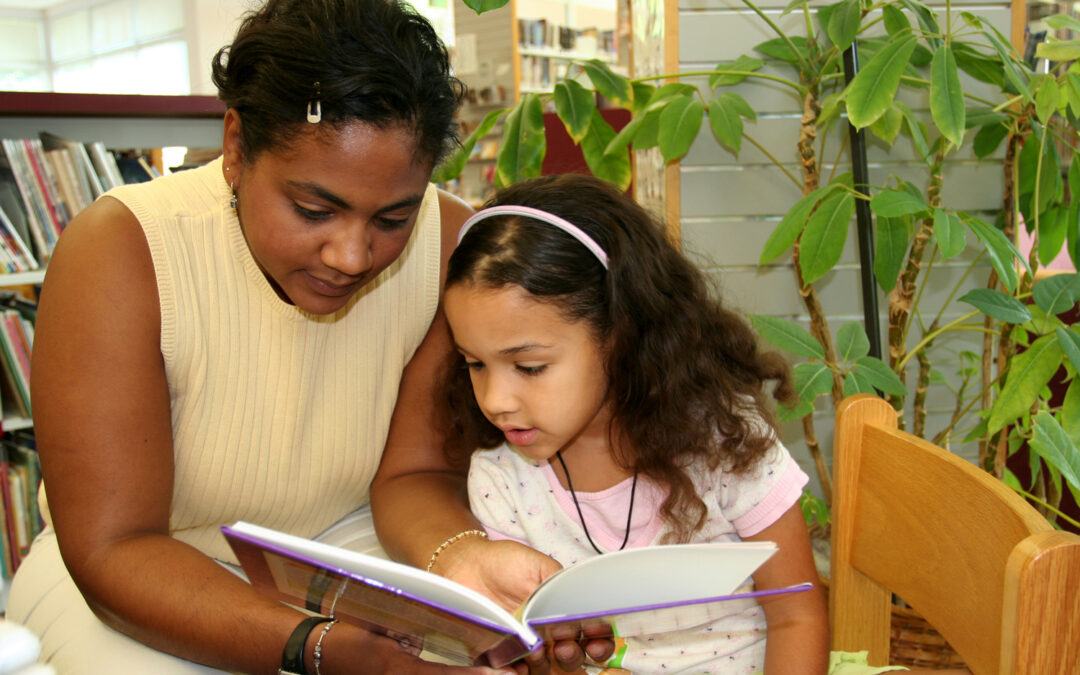
by Phillip Kindschi | Aug 7, 2014 | Occupational Therapy
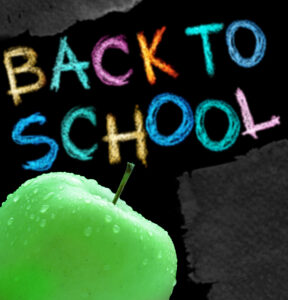 Many schools are starting in the following 1-2 weeks. Many children, especially children who are seen for Occupational Therapy, have difficulties with changes in routine, transitions, and sleep disturbances. Here are some strategies to start implementing NOW to reduce the risk of tantrums and improve the transition into school (especially for little ones who have never attended school before).
Many schools are starting in the following 1-2 weeks. Many children, especially children who are seen for Occupational Therapy, have difficulties with changes in routine, transitions, and sleep disturbances. Here are some strategies to start implementing NOW to reduce the risk of tantrums and improve the transition into school (especially for little ones who have never attended school before).
1) Begin using the school-year bed time and routine 2 weeks prior to school starting. According to the National Sleep Foundation, children under age 5 need 11-13 hours of sleep each night (not including naps) while children ages 6-12 require 10-11 hours of sleep.
-
- Reduce electronics (TV, iPad, video games) 2 hours prior to bedtime
- Removed all electronics from the bedroom
- Try using “black out” curtains since the sun is still up longer hours
- Eliminate caffeine, food dyes and sugar 2 hours prior to bedtime
- Be consistent and firm with bedtime routines
- Ask your therapist for more sensory-based bedtime strategies for calming/regulation skills.
2) Also begin the morning routine including wake up time, dressing, packing the lunch or backpack and eating breakfast. This will allow for the parent to recognize how much time is actually required to decrease rushing and additional stress.
-
- For children who cannot read, use a picture schedule of their routine. Be very clear with the order of pictures. For example, your child may need a routine for the sequence of dressing to keep posted on his closet (i.e: undies, pants, shirt, socks, shoes) and another routine for hygiene posted on the bathroom mirror (i.e.: brush teeth, wash face, comb hair, etc.). For more information on using picture schedules: www.do2learn.com/picturecards
- Older children (readers) can use a written schedule or checklist which is more complex. Older children can also start practicing using an alarm clock and time management to estimate how much time they need for each activity.
- Do not allow TV, video games, or play time until after all of the necessary activities have been completed. Many children get “stuck” in play immediately after waking up and then melt down when asked to get ready for school and leave the television/toys.
3) Many children benefit from the use of social stories to improve transitions and behaviors while reducing anxiety from the unknown. Social stories should be very specific with correct names, pictures/drawing, etc. They should be simple and easy to follow.
-
- Parent may write the story while answering child’s questions and worries
- Child may draw the pictures or embellish on the main themes
- Focus on the positive behaviors you are seeking.
- Be clear and concise.
- For example, a child with difficulties separating from his parent: “Jack will go to school next Monday. His teacher is Miss Amanda. Mommy will drop him off at the door and give him a hug. Jack will have his backpack and will walk into his classroom all by himself! It’s okay to feel “worried” but he will feel “happy” to see his friend Marcus. Jack will make good choices and use his listening ears. He will make new friends. Jack will see Mommy at 3:00 when school is over for the day.”
Amanda Masters, MS, OTR/L
Clinic Therapist – TherapyWorks
Check out these related posts:

by Phillip Kindschi | Jun 30, 2014 | Occupational Therapy
It’s Time for Summer Water Play!
It’s hot outside, and we can expect the temperatures to keep rising! With that, it’s still important for kids to get outside and play, and what better way than in the water?!
Water play is beneficial in a variety of ways, whether it be swimming in a pool, running through a sprinkler, or splashing in a water table. When children play in the water, they encounter a multi-sensory experience:
- Auditory – the sound of the water and others around
- Tactile – the feeling of the water surrounding or splashing it
- Oral/olfactory – the smell/taste of the water
- Vestibular/proprioceptive – the movement and pressure of the water around the child’s body
Water is great for the sensory experience, but it is also great for so much more, like muscle tone and strength. So, get your children out of the house and into the water. Let them experience all the water has to offer while burning off all of their excess energy!
Amber Torczon, MOT, OTR/L
Clinic Occupational Therapist
Check out these related posts:

by Phillip Kindschi | May 9, 2014 | Occupational Therapy
 With summer time vastly approaching and school coming to an end, there are plenty of inexpensive and fun ways to keep your children entertained. These ideas are not only fun for your child, but can also help maintain some of the skills that were being addressed in school. Tactile, gross motor, fine motor and play/social skills will all be reinforced. So let’s get started, and let the fun begin!
With summer time vastly approaching and school coming to an end, there are plenty of inexpensive and fun ways to keep your children entertained. These ideas are not only fun for your child, but can also help maintain some of the skills that were being addressed in school. Tactile, gross motor, fine motor and play/social skills will all be reinforced. So let’s get started, and let the fun begin!
Make a Splash: Water is not only refreshing on a hot summer’s day, but also is very therapeutic for your child. You can go to a public pool nearby, fill a little plastic pool, lay out a splash pad, or just play in the sprinklers. These are simple and easy ways you can enjoy water activities with your child. There are actually many benefits that your child can gain from these types of water experiences, such as, tolerating touch, eye contact, balance, gross motor planning and even learning water safety.
 Painting (outdoors): Painting may be thought of as messy instead of “fun” in a parent’s mind. But when the kids are hot and ready to come inside you can actually keep them cooled off and refreshed with this creative painting idea…so let’s beat the heat.
Painting (outdoors): Painting may be thought of as messy instead of “fun” in a parent’s mind. But when the kids are hot and ready to come inside you can actually keep them cooled off and refreshed with this creative painting idea…so let’s beat the heat.
Kool-Aid ice cubes: Try this way of fun in the sun painting and get in a few licks to awaken their palate too. All you have to do is buy Kool-Aid packages (variety of colors) and then place powder in ice trays and pour in a little bit of water. You can place Popsicle sticks in each one for easier grasping. This is great for kids that are tactile defensive or need to work on their grasping skills to develop a tripod or quadripod grasp. It’s tasty therapy.
Chalk: Have you ever colored with a marker and then switched to crayons? When you colored with a marker you probably realized you did not have to put much effort in drawing because the ink glides on the paper. With a crayon you have to apply more pressure. The same pressure is applied when using chalk. Chalk drawing provides a lot of sensory feedback into the hands, forearms and shoulder joints therefore allowing us to know where our body is in space. Side walks and driveways make a perfect canvas for a rainbow of colors.
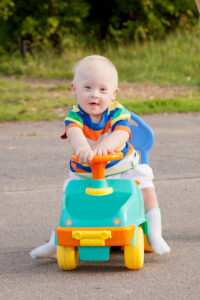 Park: Going to the park is a perfectly free playtime activity. It allows children to explore the outdoor environment and is a great tool for motor planning. While they are climbing ladders and hanging on the monkey bars, they are building strength in their bodies. This also allows them to interact with other children and enhances their social skills.
Park: Going to the park is a perfectly free playtime activity. It allows children to explore the outdoor environment and is a great tool for motor planning. While they are climbing ladders and hanging on the monkey bars, they are building strength in their bodies. This also allows them to interact with other children and enhances their social skills.
Erin Kizzar, MOT, OTR/L
TW Occupational Therapy Clinic Manager
Occupational Therapist
Also Check Out:
Summertime Sensory Fun
Summer Speech Fun
Keep Learning with summertime OT Fun

by Phillip Kindschi | Apr 8, 2014 | Occupational Therapy
A “sensory diet” is a personalized activity plan that provides the sensory input a person needs to stay focused and organized throughout the day in a structured way. People of all ages with varying levels of sensory issues can benefit for a sensory diet. We all use sensory diets in our own way during the day, from drinking our cup of coffee in the morning, to chewing gum or snacking while starring at the computer, to hot baths at the end of the day to de-stress. In the same way, an occupational therapist will create a structured schedule to offer children activities that will help there body “wake up” or “slow down” so that they can function appropriately throughout the day.
All people are “wired” differently, this is what makes us unique! Our nervous system regulates the sensory input we experience throughout the day and has the job of filtering important from non-important, safe from not safe input. Sometimes these messages are “scrambled,” which leads to arousal levels that can be “too high,” “just right,” or “too low.” When we are “too high” our body is constantly on the move, we are fidgety and we can’t focus and complete the tasks. When we are “too low” our body is tired and we can’t focus and get up and moving. The job of a sensory diet is to use sensory tools to help regulate our nervous system so that we are “just right” so that we can focus and complete our task. For example when a child is “too high,” their therapist may suggest to squish between pillows or complete 10 frog jumps to help slow the child’s body. If the child is to low the occupational therapist may suggest jumping on a trampoline or swinging to wake them up.
Typically I suggest trying to complete some of the listed activities for 10-15 minutes every couple hours at home. Please consult with your occupational therapist because it is important that the type of input a child is getting depends on their arousal level. Many times it is great to complete tasks before and after school hours to help improve focus and transitions.
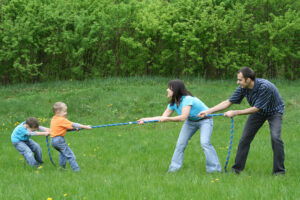 High arousal tools:
High arousal tools:
- Lying under a weighted blanket or stack of pillows and blankets for deep pressure.
- Wearing a weighted or compression vest ( ask your therapist about one before buying).
- Help put away heavy groceries or carry laundry basket.
- Wear a backpack that has a couple books in it for weight.
- Wheelbarrow walk, bear walk, push-ups, sit-ups.
- Tug of war games.
- Roll self up in a blanket like a burrito
Low arousal tools:
- Jumping on a trampoline or into a pile of pillows.
- Swing
- Spinning on a sit-n-spin or log roll down the hallways.
- Bouncing on a therapy ball
- Drinking or eating something with a strong flavor (such as sour)
Michelle Zurek,
MA, OTR/L
Clinic Therapist, TherapyWorks
Also check out – What is Occupational Therapy and Take it Outside

by Phillip Kindschi | Apr 2, 2014 | Occupational Therapy, Physical Therapy
APRIL IS OCCUPATIONAL THERAPY MONTH!
Everyone always thinks that tummy time is important only for babies but I want to tell you it is actually important for kids of all ages. Tummy time, also known as prone on elbows, is a developmental position in which the child is on their belly on a flat surface and propped up on their elbows. I recommend this position for all of my children especially my older kids and here is why…
- When the neck is extended it stimulates the brain stem which can be very regulating to the sensory system
- It helps build strength and stability through the shoulders and upper arms which is so important in the development of fine and visual motor skills
- It also promotes increased visual skills such as tracking a moving object which is important to the development of higher level skills such as academics and gross motor acquisition
 Here are some suggestions for activities while on tummy:
Here are some suggestions for activities while on tummy:
- Coloring, handwriting or homework tasks. I like to use a 3” binder as a slant board to help facilitate grasp while writing or coloring.
- Complete puzzles large or small.
- Watch TV or play a short video game. I recommend only a short period of screen time.
- Use an exercise ball with the child laying belly down while completing a floor task.
- Read a book.
- Play board games.
- Great for children to do at school for circle time, etc.
The ideas are limitless and I encourage parents to get on the floor and interact with their child in that position as well! Remember that the child may only tolerate several minutes at a time, but keep encouraging and persisting and eventually
their endurance will improve.
Have fun!
Erin Kizzar, MOT, OTR/L
OT Department Manager, Therapyworks




![]() 💙
💙![]() .
.

 Many schools are starting in the following 1-2 weeks. Many children, especially children who are seen for
Many schools are starting in the following 1-2 weeks. Many children, especially children who are seen for 


 With summer time vastly approaching and school coming to an end, there are plenty of inexpensive and fun ways to keep your children entertained. These ideas are not only fun for your child, but can also help maintain some of the skills that were being addressed in school. Tactile, gross motor, fine motor and play/social skills will all be reinforced. So let’s get started, and let the fun begin!
With summer time vastly approaching and school coming to an end, there are plenty of inexpensive and fun ways to keep your children entertained. These ideas are not only fun for your child, but can also help maintain some of the skills that were being addressed in school. Tactile, gross motor, fine motor and play/social skills will all be reinforced. So let’s get started, and let the fun begin! Painting (outdoors): Painting may be thought of as messy instead of “fun” in a parent’s mind. But when the kids are hot and ready to come inside you can actually keep them cooled off and refreshed with this creative painting idea…so let’s beat the heat.
Painting (outdoors): Painting may be thought of as messy instead of “fun” in a parent’s mind. But when the kids are hot and ready to come inside you can actually keep them cooled off and refreshed with this creative painting idea…so let’s beat the heat. Park: Going to the park is a perfectly free playtime activity. It allows children to explore the outdoor environment and is a great tool for motor planning. While they are climbing ladders and hanging on the monkey bars, they are building strength in their bodies. This also allows them to interact with other children and enhances their
Park: Going to the park is a perfectly free playtime activity. It allows children to explore the outdoor environment and is a great tool for motor planning. While they are climbing ladders and hanging on the monkey bars, they are building strength in their bodies. This also allows them to interact with other children and enhances their 
 High arousal tools:
High arousal tools:
 Here are some suggestions for activities while on tummy:
Here are some suggestions for activities while on tummy: